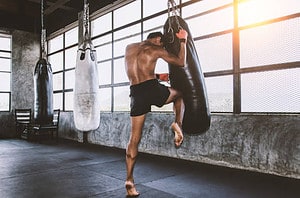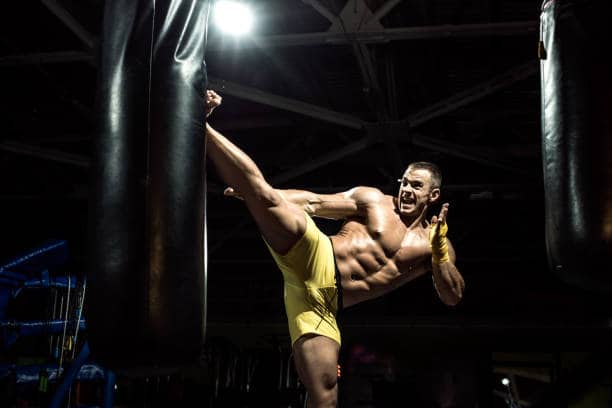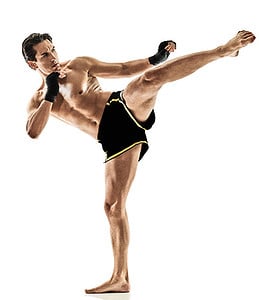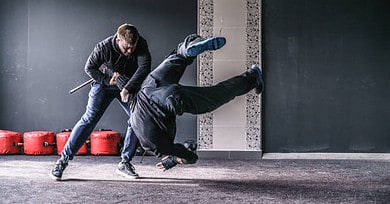What are the origins of Muay Thai and Kickboxing, and how have they evolved over time?
Table of Contents
Introduction
Muay Thai and Kickboxing are two of the most popular martial arts in the world. Muay Thai is a traditional martial art from Thailand, while Kickboxing is a hybrid martial art that combines elements of Muay Thai, Karate, and Boxing. Both sports are known for their intense physical and mental training, and they are both popular for their effectiveness in self-defense and competition. Muay Thai and Kickboxing are both great ways to get in shape, learn self-defense, and have fun.
The History of Muay Thai and Kickboxing
Muay Thai, also known as Thai boxing, is a combat sport that originated in Thailand. It is a form of martial arts that combines stand-up striking and clinching techniques. Muay Thai is known for its powerful strikes, including punches, kicks, elbows, and knees. It is also known for its use of the clinch, which is a close-range grappling technique used to control an opponent.

Kickboxing is a martial art that combines elements of Muay Thai and boxing. It is a stand-up combat sport that uses punches, kicks, elbows, and knees. Kickboxing is known for its fast-paced, aggressive style of fighting. It is also known for its use of combinations, which are sequences of strikes used to overwhelm an opponent.
Muay Thai and kickboxing have been used in various forms of self-defense for centuries. In the modern era, both are popular sports that are practiced in gyms and dojos around the world. They are also popular forms of exercise and are used by many people to stay fit and healthy.
Muay Thai and kickboxing are both effective forms of self-defense and can be used to protect oneself in dangerous situations. They are also great forms of exercise and can help to improve physical fitness and mental well-being. Whether you are looking to learn self-defense or just stay in shape, Muay Thai and kickboxing are great options.
The Difference between Muay Thai and Kickboxing
In terms of rules, Muay Thai and kickboxing have some similarities. Both sports involve rounds of three minutes with a one-minute rest period in between rounds. Both sports also involve the use of protective gear such as gloves, shin guards, and headgear.
However, there are some differences in the rules of the two sports. In Muay Thai, fighters are allowed to use elbows and knees, while in kickboxing, these strikes are not allowed. Additionally, in Muay Thai, fighters are allowed to clinch, while in kickboxing, this is not allowed.
In terms of scoring, Muay Thai and kickboxing also have some differences. In Muay Thai, points are awarded for strikes, takedowns, and clinching, while in kickboxing, points are only awarded for strikes.
Overall, Muay Thai and kickboxing are two martial arts that share some similarities but also have some distinct differences. While both sports involve rounds of three minutes with a one-minute rest period in between rounds, Muay Thai allows the use of elbows and knees, as well as clinching, while kickboxing does not. Additionally, Muay Thai awards points for strikes, takedowns, and clinching, while kickboxing only awards points for strikes.
The Different Styles Kickboxing
Kickboxing is a martial art that combines elements of boxing and martial arts. It is a full-contact sport that involves striking and kicking techniques. There are several different styles of kickboxing, each with its own unique rules and techniques.
The most popular style of kickboxing is Muay Thai.
Another popular style of kickboxing is Japanese kickboxing, also known as K-1. This style is similar to Muay Thai, but it has a few differences. K-1 fighters use more punches and kicks, and they are allowed to use throws and sweeps. This style also emphasizes the use of the clinch, but it is used more defensively than in Muay Thai.
The third major style of kickboxing is American kickboxing, also known as full-contact karate. This style is a hybrid of Muay Thai and karate. American kickboxers use punches, kicks, elbows, and knees, but they are not allowed to use throws or sweeps.
The fourth major style of kickboxing is Dutch kickboxing.
Each of these five styles of kickboxing has its own unique rules and techniques. All of them involve striking and kicking techniques, but each style has its own unique approach to the sport. Whether you are looking to compete or just want to learn a new martial art, there is a style of kickboxing that is right for you.
The Benefits of Training in Muay Thai and Kickboxing
Physically, Muay Thai and kickboxing are excellent forms of exercise. Both involve a combination of aerobic and anaerobic exercise, which helps to improve cardiovascular health and build strength and endurance. Training in Muay Thai and kickboxing also helps to improve coordination, balance, and agility. Practitioners can expect to see an increase in their overall physical fitness level.
Mentally, Muay Thai and kickboxing can be beneficial as well. Training in these martial arts can help to improve focus and concentration, as well as self-discipline and confidence. Practitioners learn to control their emotions and reactions in stressful situations, which can be beneficial in everyday life. Additionally, the physical and mental challenges of training can help to reduce stress and anxiety.
Finally, Muay Thai and kickboxing can be a great way to make new friends and socialize. Many martial arts schools offer classes for all ages and skill levels, so it’s easy to find a group of people to train with. Training with others can help to motivate and encourage practitioners to reach their goals.
Conclusion
Ultimately, both styles are effective and can be used to improve physical and mental health.





